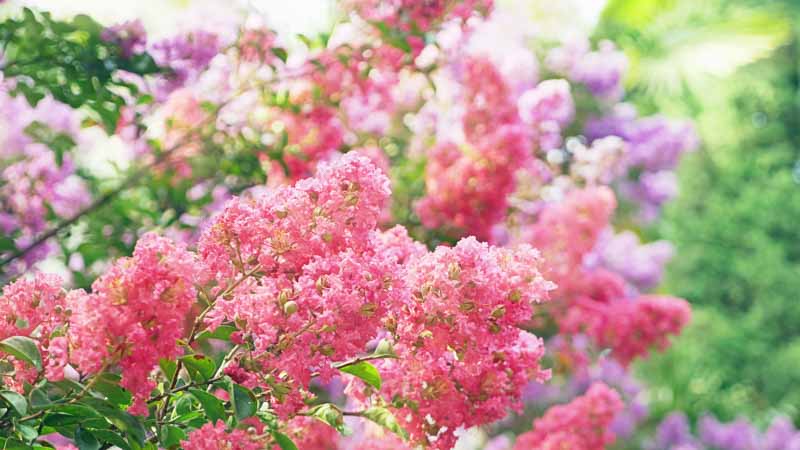Crepe Myrtle: Exploring the Beauty of These Colorful Garden Additions
Crepe Myrtle, a delightful and enchanting addition to many gardens, is admired for its beauty and rich in fascinating attributes and history. Here are some fun facts about this beloved plant:
Origins and History: Native to Asia, particularly China, Korea, and Japan, Crepe Myrtles were introduced to the American South in the 18th century. They have since become synonymous with Southern landscaping.
Name Significance: The name ‘Crepe Myrtle’ comes from the flowers’ crepe-like texture. The botanical name, ‘Lagerstroemia,’ honors Magnus von Lagerström, a Swedish naturalist and a director of the Swedish East India Company.
Bark Beauty: One of the tree’s unique features is its attractive, exfoliating bark, which peels back to reveal a smooth, multi-toned underbark. This feature provides year-round interest, especially in winter when flowers are absent.
Variety of Colors and Sizes: Crepe Myrtles come in a wide range of colors, including white, pink, red, and purple. The sizes vary from small shrubs to trees over 30 feet tall, making them versatile in landscape design.
Symbolism: In cultural symbolism, Crepe Myrtle represents love and romance in some Eastern cultures, and in the United States, it is often seen as a symbol of Southern strength and resilience.
Long Blooming Season: They have one of the longest blooming periods of any flowering tree, often lasting up to four months, from early summer into fall.
Drought Resistance: Once established, Crepe Myrtles are incredibly drought-resistant, making them a favorite in areas with water restrictions or xeriscaping.
Resilient Growth: They can regenerate from the roots even if the trunk is damaged or cut down, showcasing their resilience.
Pollution Tolerance: They are known for their ability to tolerate urban pollution, making them a popular choice for city landscaping.

